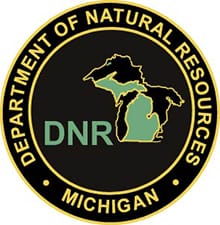Lethal tree infection caused by transport of firewood


Lansing, MI -(Ammoland.com)- Oak wilt outbreaks are increasing in Michigan and the Department of Natural Resources has conducted treatment at several state parks to halt the spread of the disease.
Oak wilt is an introduced disease that causes rapid death of infected trees. The fungus is easily transported by beetles from infected wood to nearby wounded trees.
Trees cannot be cured of oak wilt, and once a tree is infected the disease can rapidly spread to neighboring trees through underground root graft connections. The loss of large numbers of oak trees in parks can be dramatic, both for the park visitor experience and the ecology of the natural habitat.
“The likely cause of the oak wilt outbreak at Michigan state parks is the movement of infected firewood into campgrounds,” said DNR natural resources steward Heidi Frei. “Campers and other park visitors can help prevent the spread of the oak wilt fungus by not moving firewood between campgrounds.”
DNR Parks and Recreation Division staff has been working the last several years to stop the spread of oak wilt at Michigan state parks throughout the state, including P.J. Hoffmaster, Otsego Lake, Interlochen, Warren Dunes and Hartwick Pines state parks; and Fort Custer, Rifle River, Waterloo, Brighton, Pinckney and Island Lake recreation areas.
Treatments in 2014 included using a vibratory plow fitted with a special blade (designed and fabricated at the DNR’s Forest Fire Experiment Station in Roscommon) that severs grafted tree roots, isolating healthy trees from infected trees. Treatment also included the application of fungistats, which inhibit the growth and reproduction of fungi, and which have been used in areas declared critical dune habitat.
“If left unchecked,” Frei said, “oak wilt will continue to spread and result in large pockets of standing dead oak trees, which may be hazardous to park visitors.”
Some parks, such as P.J. Hoffmaster, have experienced considerable losses. More than 100 large red oaks, including the most picturesque grove of red oaks in the campground, have been killed by oak wilt.
For more information on oak wilt prevention and stewardship, visit www.michigan.gov/foresthealth or contact Heidi Frei at 517-202-1360 or freih@michigan.gov.
About The Michigan Department of Natural Resources
The Michigan Department of Natural Resources is committed to the conservation, protection, management, use and enjoyment of the state’s natural and cultural resources for current and future generations. For more information, go to www.michigan.gov/dnr.
